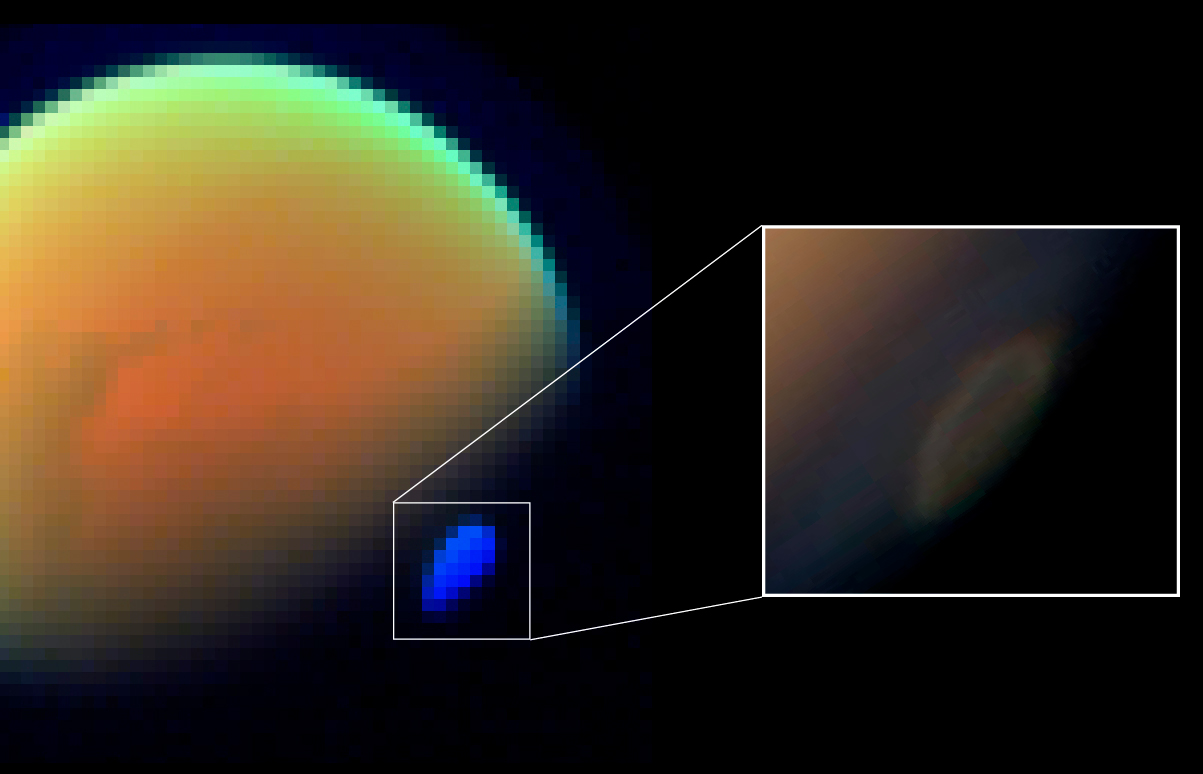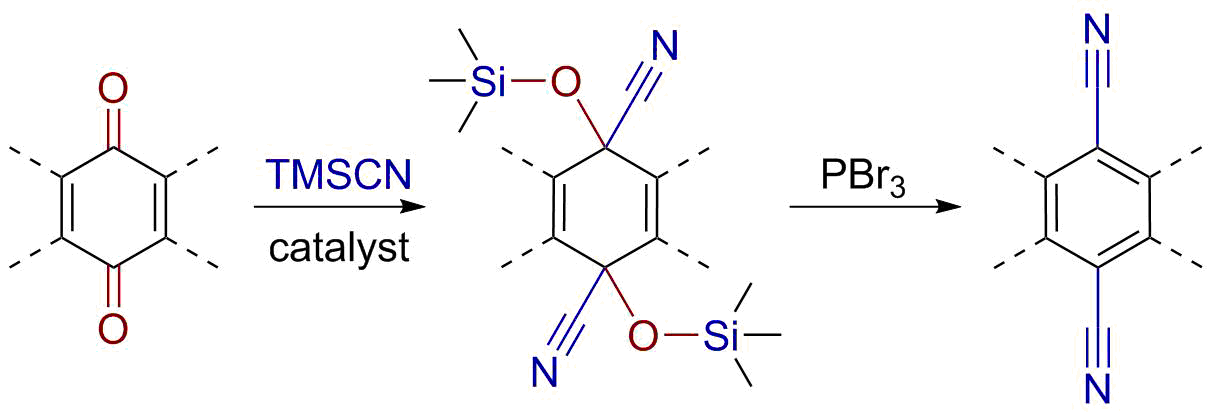|
Aminomalononitrile
Aminomalononitrile (AMN) is the organic compound with the formula . The compound can be viewed as an amine-substituted malononitrile. It is of some interest to the study of the chemical origin of life because it represents a trimer of HCN, speculated to be a progenitor of nucleic acids. Aminomalononitrile has been prepared by reduction of the oxime: with aluminium amalgam. The compound is used in situ but can be isolated as its tosylate salt where -OTs is .{{cite journal , last1=Ferris, first1=J. P., last2=Sanchez, first2=R. A., last3=Mancuso, first3=R. W., doi=10.15227/orgsyn.048.0001 , title=Aminomalononitrile p-Toluenesulfonate , journal=Organic Syntheses , date=1968 , volume=48 , page=1 : AMN reacts with cyanide to give diaminomaleonitrile, a tetramer A tetramer () (''tetra-'', "four" + '' -mer'', "parts") is an oligomer formed from four monomers or subunits. The associated property is called ''tetramery''. An example from inorganic chemistry is titanium methox ... [...More Info...] [...Related Items...] OR: [Wikipedia] [Google] [Baidu] |
Diaminomaleonitrile
Diaminomaleonitrile (DAMN) is an organic compound composed of two amino groups and two nitrile groups bonded to a central alkene unit. The systematic name reflects its relationship to maleic acid. DAMN forms by oligomerization of hydrogen cyanide. It is the starting point for the synthesis of several classes of heterocyclic compounds. It has been considered as a possible organic chemical present in prebiotic conditions. Isolation and synthesis Diaminomaleonitrile was first isolated in 1873 as an impure black solid, when it was recognized as a derivative of hydrogen cyanide with the formula (HCN)x. It was identified as the tetramer (HCN)4 by ebullioscopy in 1923. The ''cis''-configuration of the amino groups was shown in 1928 through reaction with glyoxal to give 2,3-diaminopyrazine, and the full structure was shown in 1955 to be diaminomaleonitrile, as opposed to the isomeric aminoiminosuccinonitrile (AISN). : It can be prepared by cyanation of aminomalononitrile. Possible ... [...More Info...] [...Related Items...] OR: [Wikipedia] [Google] [Baidu] |
Hydrogen Cyanide
Hydrogen cyanide (formerly known as prussic acid) is a chemical compound with the chemical formula, formula HCN and structural formula . It is a highly toxic and flammable liquid that boiling, boils slightly above room temperature, at . HCN is produced on an industrial scale and is a highly valued Precursor (chemistry), precursor to many chemical compounds ranging from polymers to pharmaceuticals. Large-scale applications are for the production of potassium cyanide and adiponitrile, used in mining and plastics, respectively. It is more toxic than solid cyanide compounds due to its Volatility (chemistry), volatile nature. A solution of hydrogen cyanide in water (molecule), water, represented as HCN(aqueous, aq), is called ''hydrocyanic acid''. The Salt (chemistry), salts of the cyanide anion are known as cyanides. Whether hydrogen cyanide is an organic compound or not is a topic of debate among chemists, and opinions vary from author to author. Traditionally, it is considered ino ... [...More Info...] [...Related Items...] OR: [Wikipedia] [Google] [Baidu] |
Origin Of Life
Abiogenesis is the natural process by which life arises from abiotic component, non-living matter, such as simple organic compounds. The prevailing scientific hypothesis is that the transition from non-living to organism, living entities on Earth was not a single event, but a process of increasing complexity involving the formation of a planetary habitability, habitable planet, the prebiotic synthesis of organic molecules, molecular self-replication, self-assembly, autocatalysis, and the emergence of cell membranes. The transition from non-life to life has never been observed experimentally, but many proposals have been made for different stages of the process. The study of abiogenesis aims to determine how pre-life chemical reactions gave rise to life under conditions strikingly different from those on Earth today. It primarily uses tools from biology and chemistry, with more recent approaches attempting a synthesis of many sciences. Life functions through the specialized ch ... [...More Info...] [...Related Items...] OR: [Wikipedia] [Google] [Baidu] |
Oxime
In organic chemistry, an oxime is an organic compound belonging to the imines, with the general Chemical formula, formula , where R is an organic Side chain, side-chain and R' may be hydrogen, forming an aldoxime, or another organic functional group, group, forming a ketoxime. O-substituted oximes form a closely related family of compounds. Amidoximes are oximes of amides () with general structure . Oximes are usually generated by the reaction of hydroxylamine with aldehydes () or ketones (). The term ''oxime'' dates back to the 19th century, a combination of the words ''oxygen'' and ''imine''. Structure and properties If the two side-chains on the central carbon are different from each other—either an aldoxime, or a ketoxime with two different "R" groups—the oxime can often have two different geometric stereoisomeric forms according to the E/Z configuration, ''E''/''Z'' configuration. An older terminology of Descriptor (chemistry)#syn, anti, ''syn'' and ''anti'' was used to ... [...More Info...] [...Related Items...] OR: [Wikipedia] [Google] [Baidu] |
Aluminium Amalgam
Aluminium amalgam is a solution of aluminium in mercury. In practice the term refers to particles or pieces of aluminium with a surface coating of the amalgam. A gray solid, it is typically used for organic reductions. It is written as Al(Hg) in reactions. Al(Hg) may be prepared by either grinding aluminium pellets or wire in mercury, or by allowing aluminium wire to react with a solution of mercury(II) chloride in water. This amalgam is used as a chemical reagent to reduce compounds, such as of imines to amines. The aluminium is the ultimate electron donor, and the mercury serves to mediate the electron transfer and to remove passivating oxide. The reaction and the waste from it contains mercury, so special safety precautions and disposal methods are needed. As an environmentally friendlier alternative, hydrides or other reducing agents can often be used to accomplish the same synthetic result. An alloy of aluminium and gallium was proposed as a method of hydrogen generatio ... [...More Info...] [...Related Items...] OR: [Wikipedia] [Google] [Baidu] |
Tosylate
In organic chemistry, a toluenesulfonyl group (tosyl group, abbreviated Ts or TosIn this article, "Ts", unless otherwise stated, means tosyl, not tennessine.) is a univalent functional group with the chemical formula . It consists of a tolyl group, , joined to a sulfonyl group, , with the open valence on sulfur. This group is usually derived from the compound tosyl chloride, (abbreviated TsCl), which forms esters and amides of toluenesulfonic acid, (abbreviated TsOH). The para orientation illustrated (''p''-toluenesulfonyl) is most common, and by convention ''tosyl'' without a prefix refers to the ''p''-toluenesulfonyl group. The tosyl terminology was proposed by German chemists Kurt Hess and Robert Pfleger in 1933 on the pattern of trityl and adopted in English starting from 1934. The toluenesulfonate (or tosylate) group refers to the (–OTs) group, with an additional oxygen attached to sulfur and open valence on an oxygen. In a chemical name, the term ''tosylate'' ... [...More Info...] [...Related Items...] OR: [Wikipedia] [Google] [Baidu] |
Tetramer
A tetramer () (''tetra-'', "four" + '' -mer'', "parts") is an oligomer formed from four monomers or subunits. The associated property is called ''tetramery''. An example from inorganic chemistry is titanium methoxide with the empirical formula Ti(OCH3)4, which is tetrameric in solid state and has the molecular formula Ti4(OCH3)16. An example from organic chemistry is kobophenol A, a substance that is formed by combining four molecules of resveratrol. In biochemistry, it similarly refers to a biomolecule formed of four units, that are the same ( homotetramer), i.e. as in Concanavalin A or different ( heterotetramer), i.e. as in hemoglobin. Hemoglobin has 4 similar sub-units while immunoglobulins have 2 very different sub-units. The different sub-units may have each their own activity, such as binding biotin in avidin tetramers, or have a common biological property, such as the allosteric binding of oxygen Oxygen is a chemical element; it has chemical symbol, symbo ... [...More Info...] [...Related Items...] OR: [Wikipedia] [Google] [Baidu] |
DAMN Aus AMN (cropped)
Damnation (from Latin '' damnatio'') is the concept of divine punishment after death for sins that were committed, or in some cases, good actions not done, on Earth. In Ancient Egyptian religious tradition, it was believed that citizens would recite the 42 negative confessions of Maat as their heart was weighed against the feather of truth. If the citizen's heart was heavier than the feather, it was said that it would be devoured by Ammit. Zoroastrianism developed an eschatological concept of a Last Judgment called Frashokereti where the dead will be raised and the righteous wade through a river of milk while the wicked will be burned in a river of molten metal. Abrahamic religions such as Christianity have similar concepts of humans facing judgement after death to determine if they will spend eternity in heaven or not. A damned human "in damnation" is said to be either in oblivion, or living in a state wherein they are divorced from Heaven and/or in a state of disgrace from ... [...More Info...] [...Related Items...] OR: [Wikipedia] [Google] [Baidu] |
Nitriles
In organic chemistry, a nitrile is any organic compound that has a functional group. The name of the compound is composed of a base, which includes the carbon of the , suffixed with "nitrile", so for example is called "propionitrile" (or propanenitrile). The prefix ''cyano-'' is used interchangeably with the term ''nitrile'' in industrial literature. Nitriles are found in many useful compounds, including methyl cyanoacrylate, used in super glue, and nitrile rubber, a nitrile-containing polymer used in latex, latex-free laboratory and medical gloves. Nitrile rubber is also widely used as automotive and other seals since it is resistant to fuels and oils. Organic compounds containing multiple nitrile groups are known as cyanocarbons. Inorganic compounds containing the group are not called nitriles, but cyanides instead. Though both nitriles and cyanides can be derived from cyanide salts, most nitriles are not nearly as toxic. Structure and basic properties The N−C−C geome ... [...More Info...] [...Related Items...] OR: [Wikipedia] [Google] [Baidu] |


